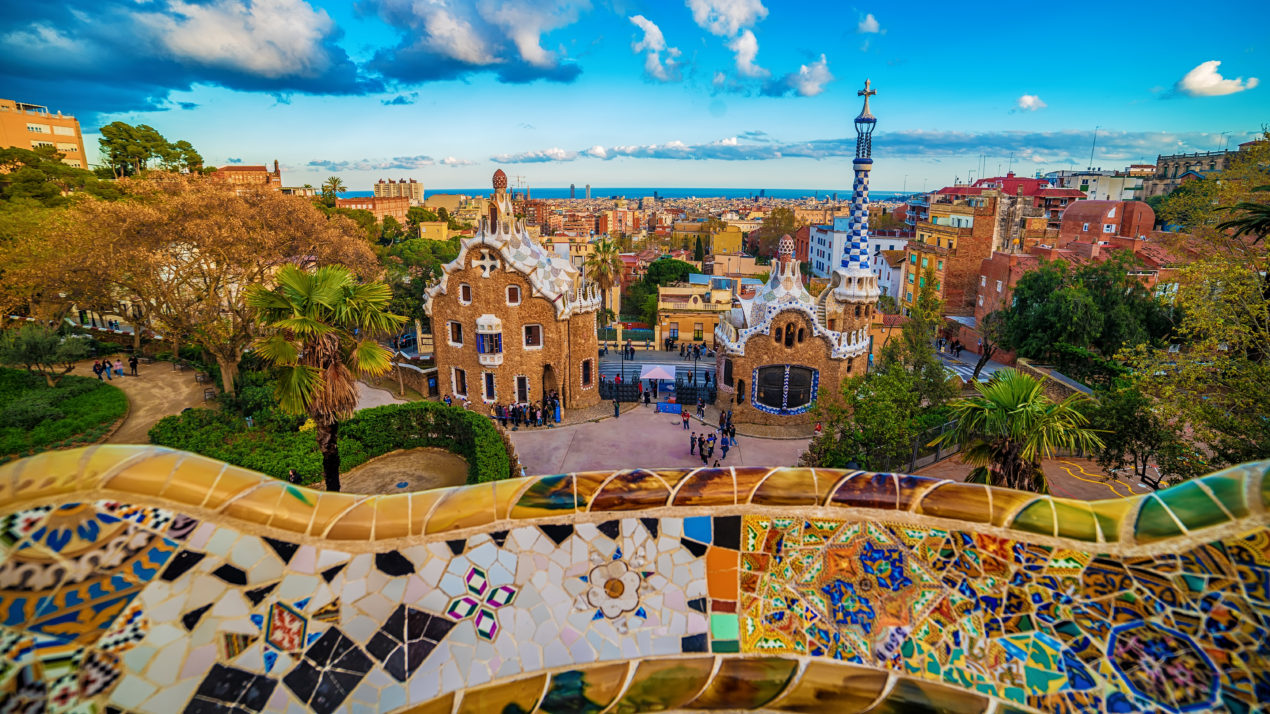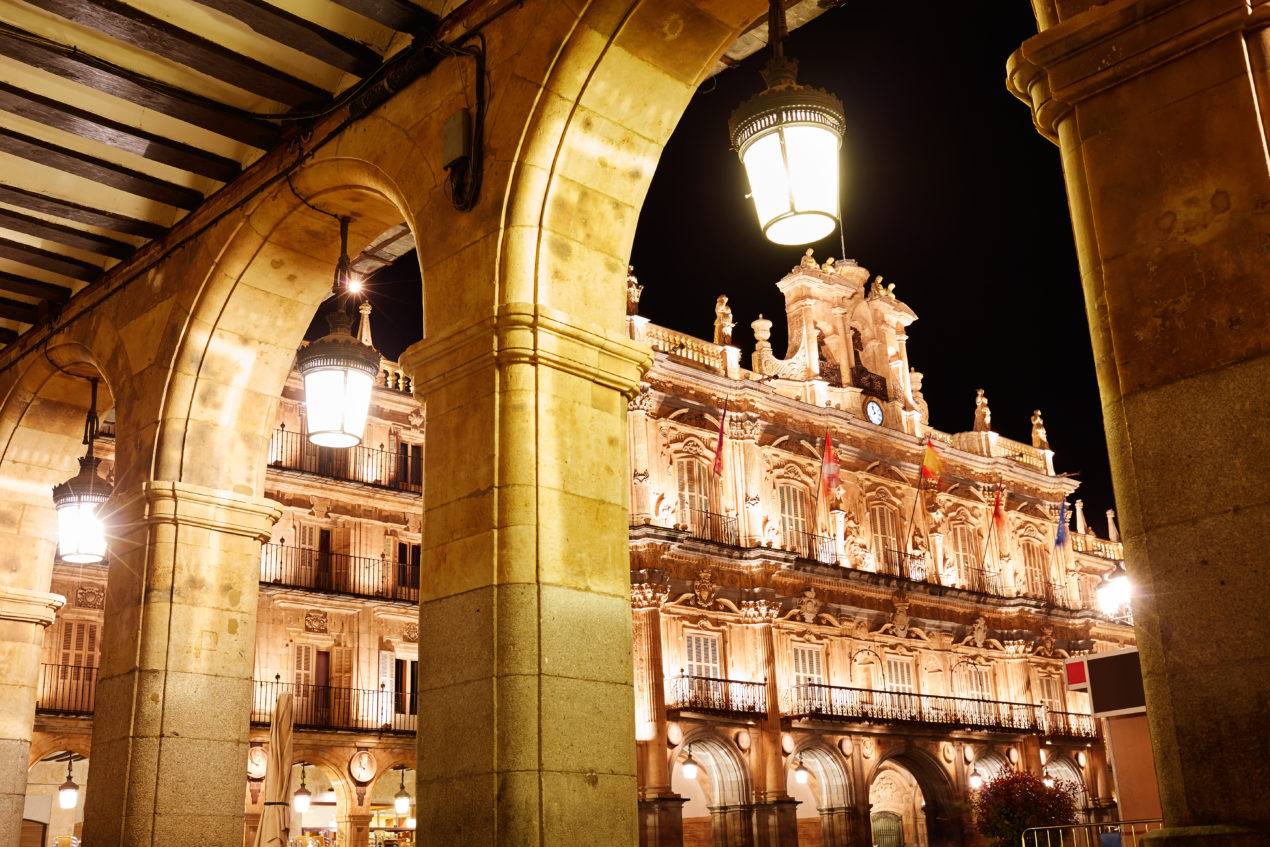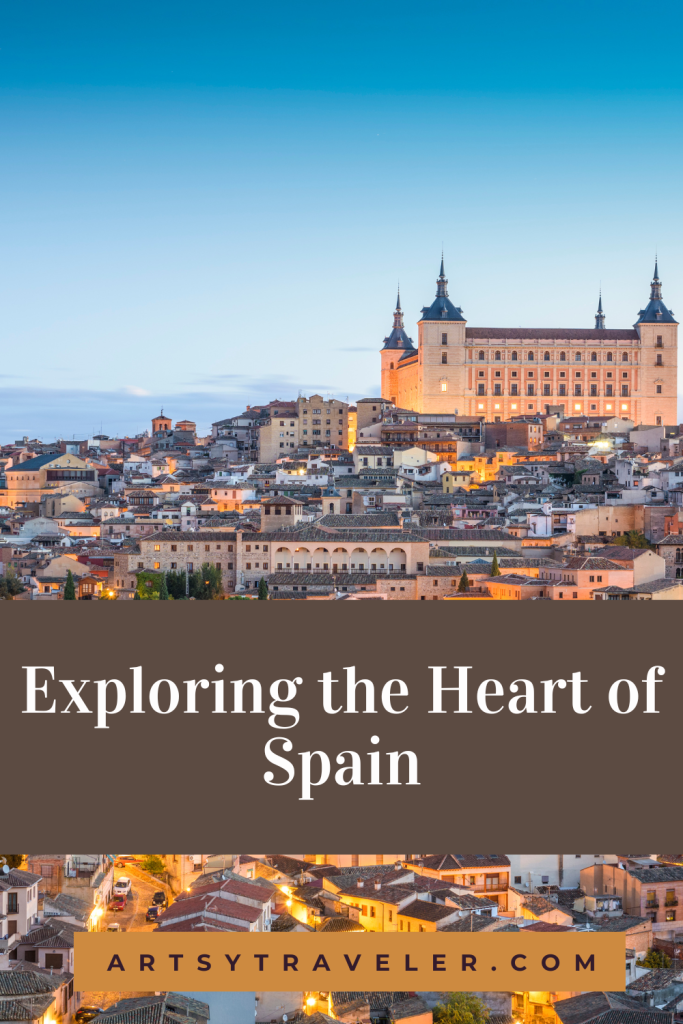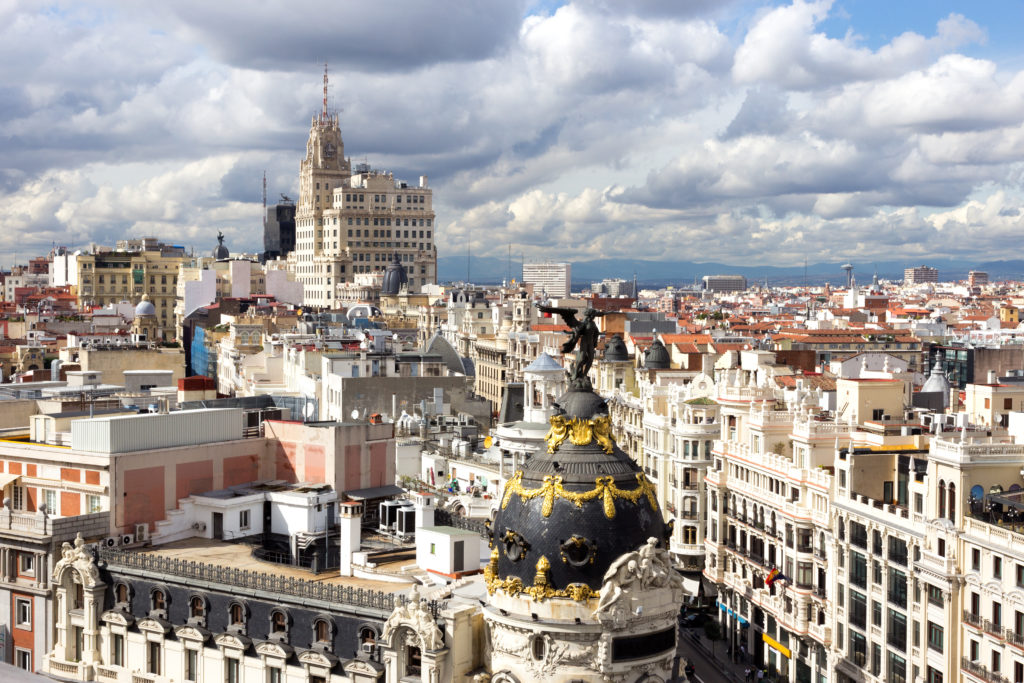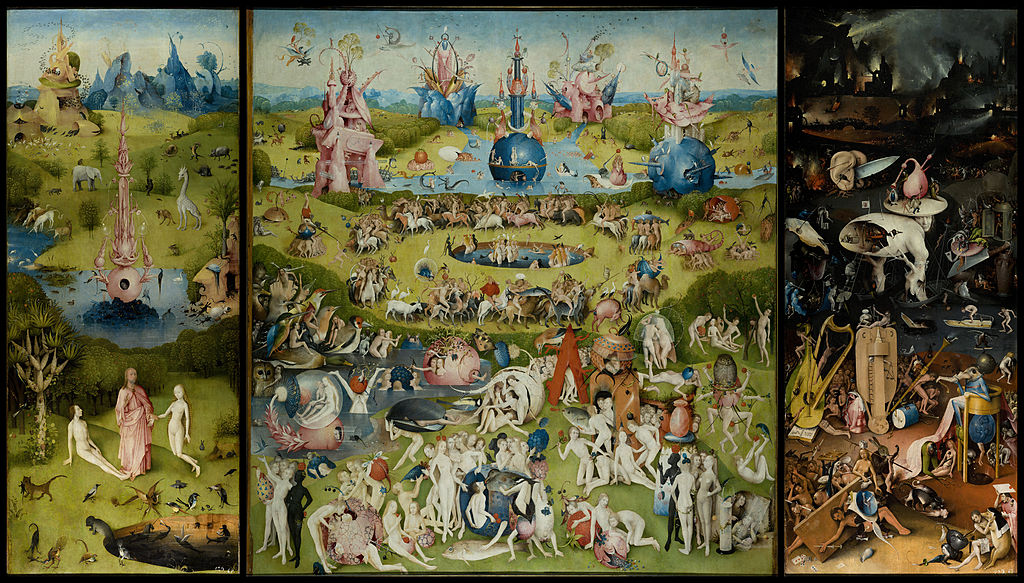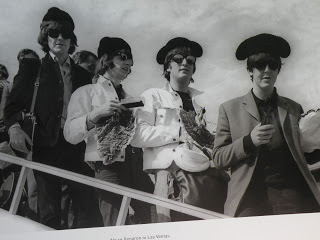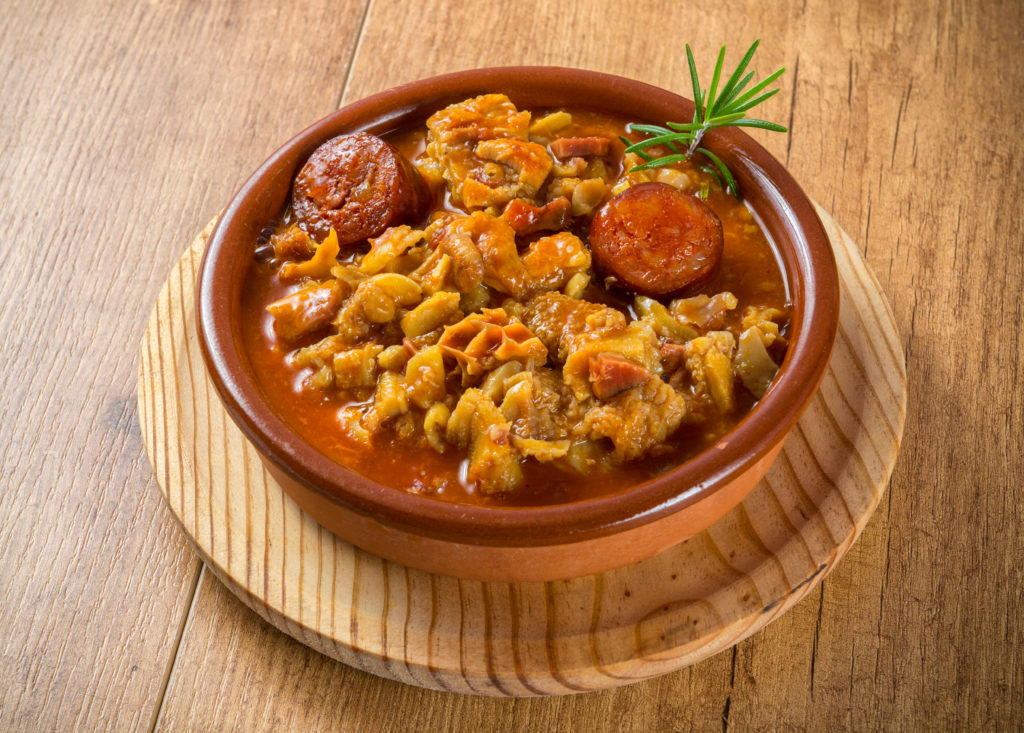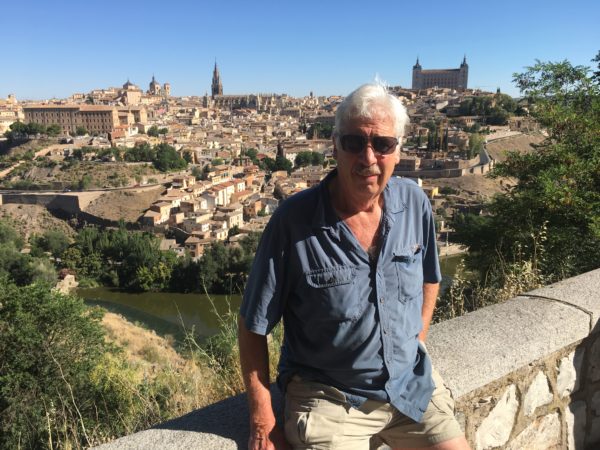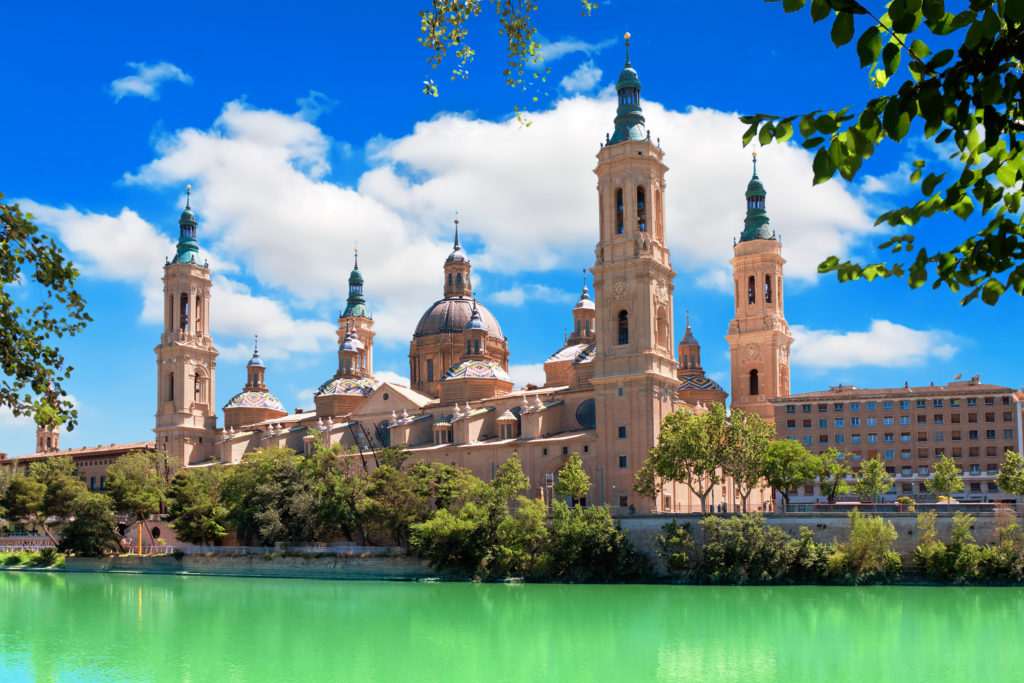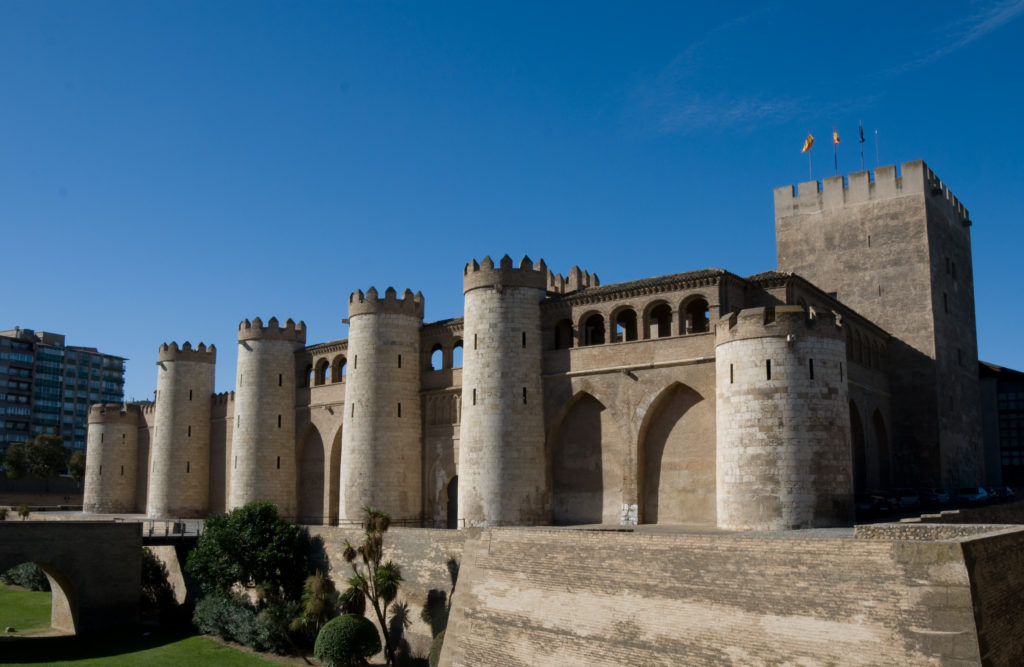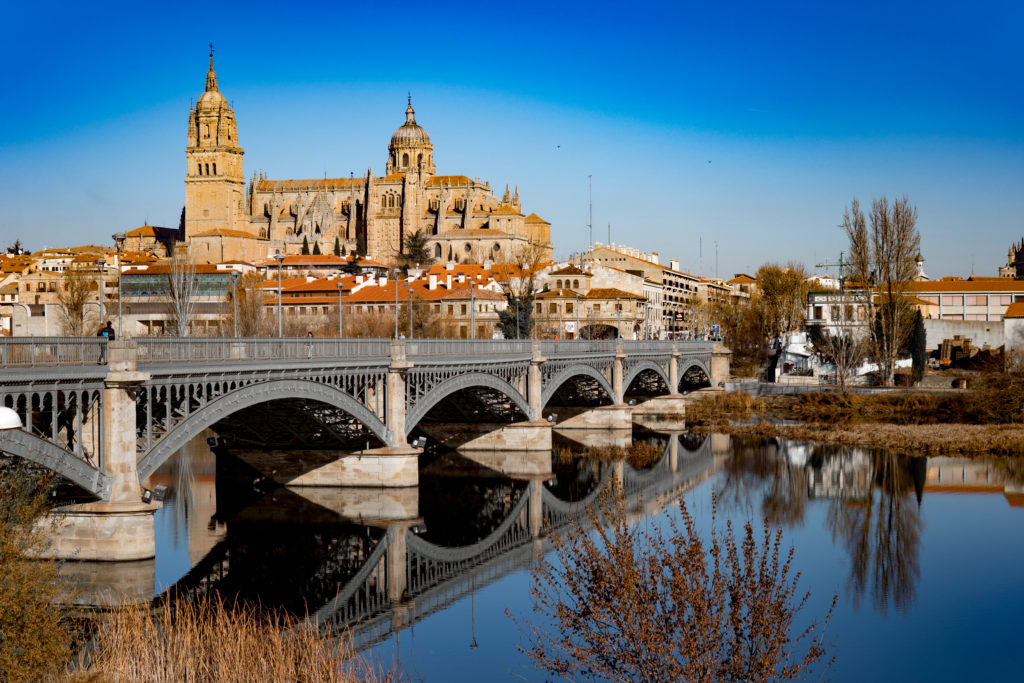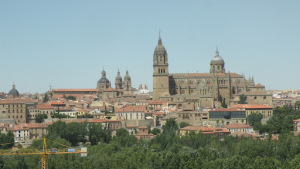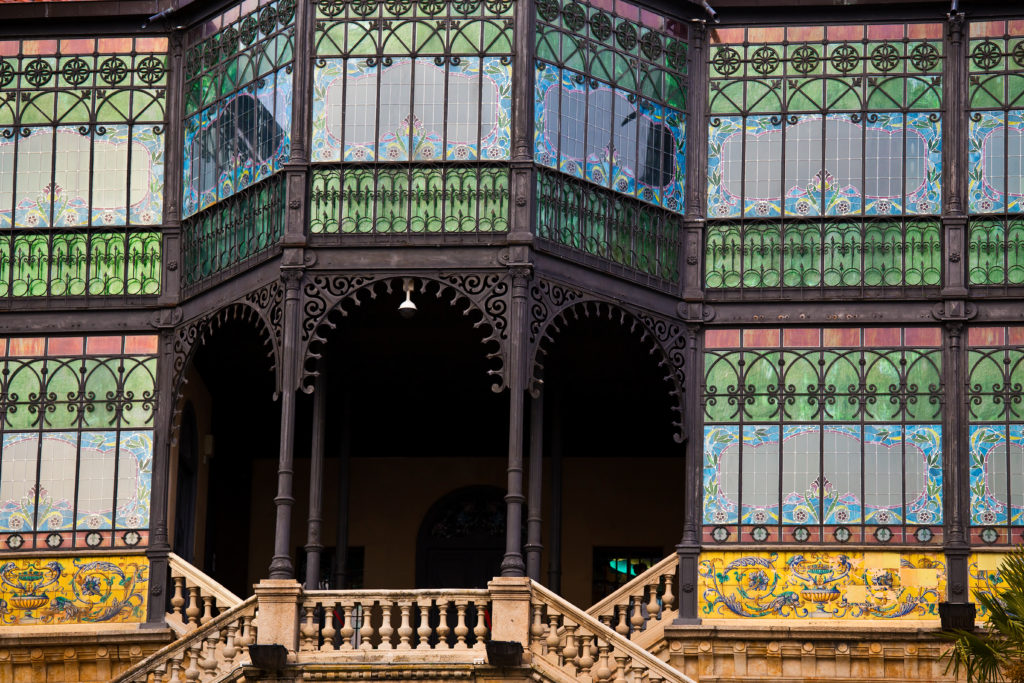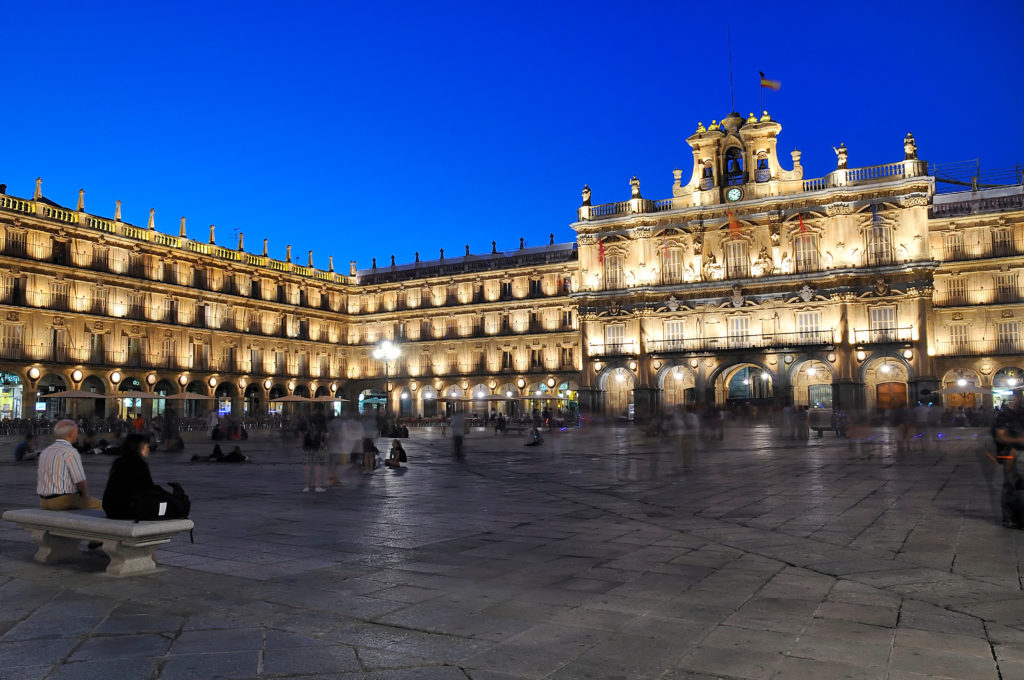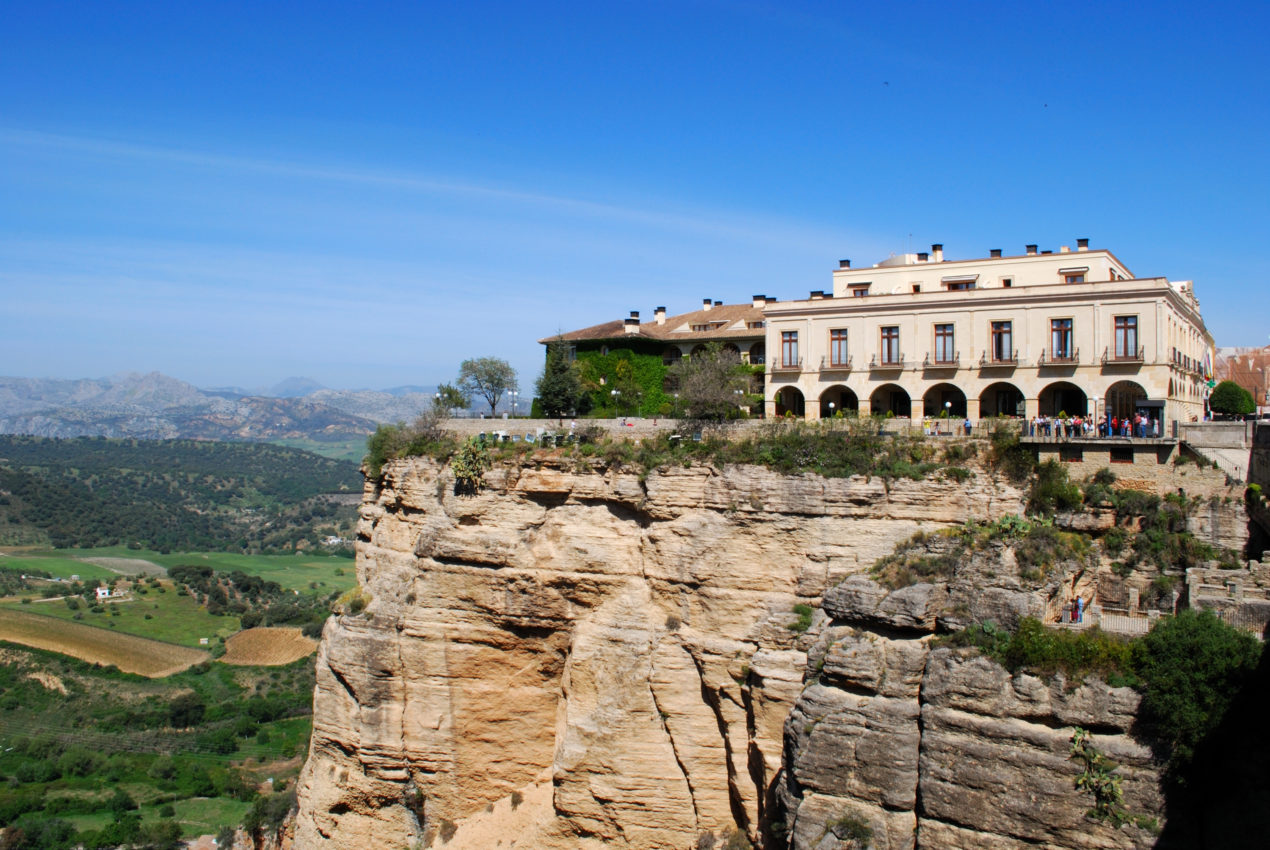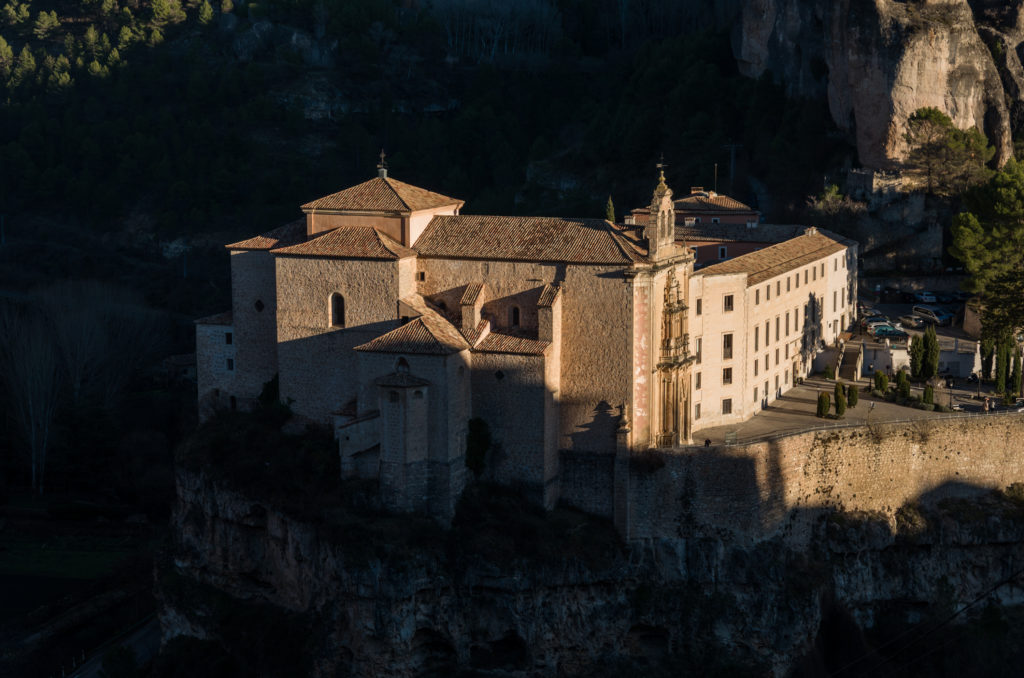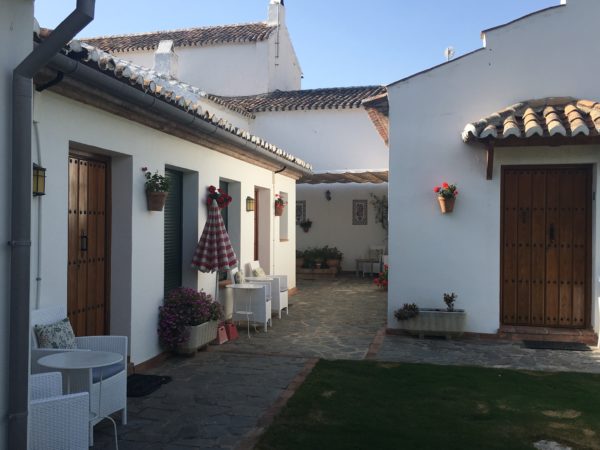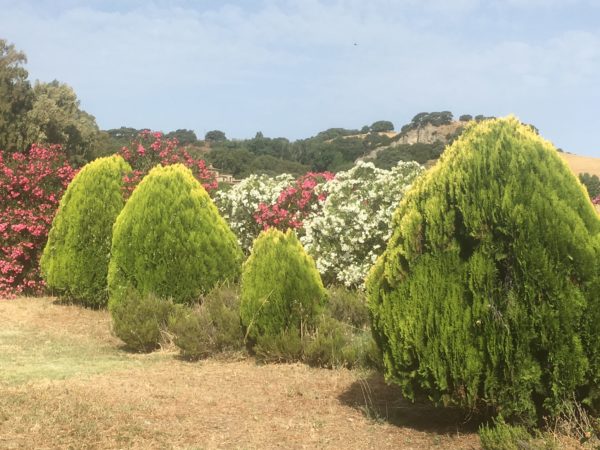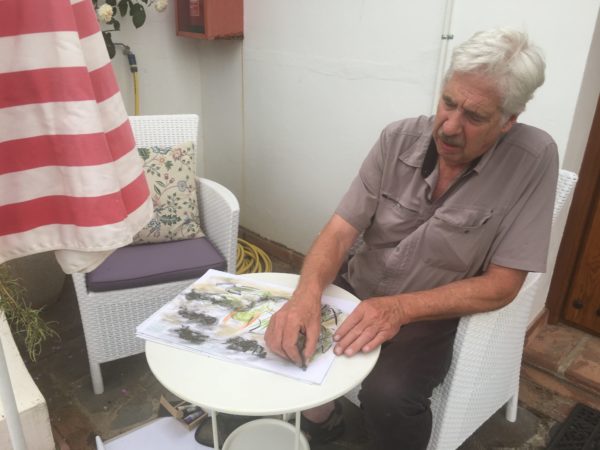Two Packed & Fabulous Days in Trendy Barcelona
Barcelona has much to offer the artsy traveler. You won’t see all of it in two days, but you will see the highlights and still have time to stroll Las Ramblas and eat great food.
Here are my suggestions for how to spend two full days and three nights in Barcelona.
Arrival Day
Presuming you arrive in Barcelona mid to late afternoon, give yourself time to get settled, then spend your evening exploring your neighborhood. I suggest staying in the Eixample area, where you’ll find good hotels, leafy treed streets, and lots of restaurants.
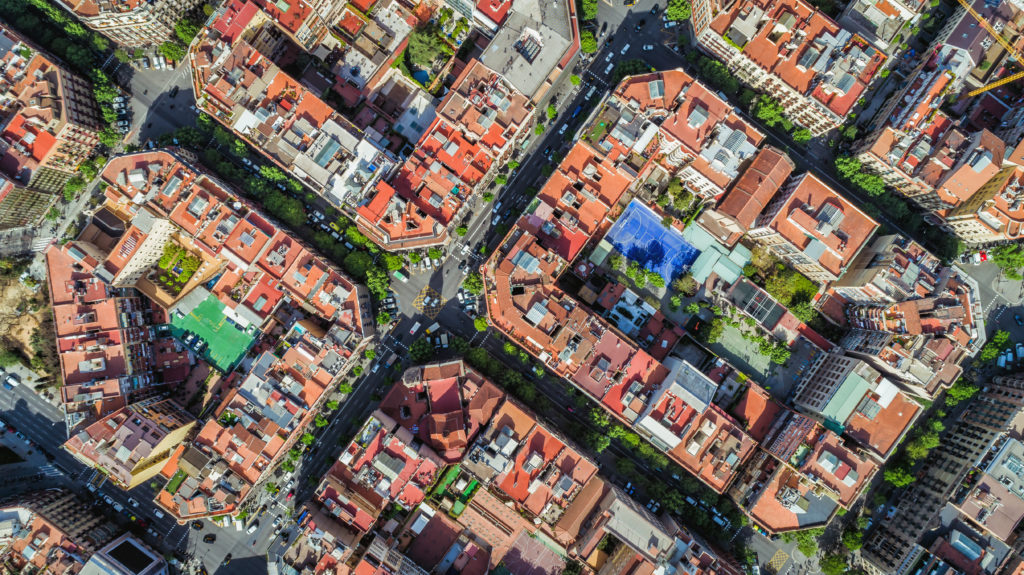
On a solo trip to Barcelona a few years ago, I was amazed at the number of restaurants a short distance from the Cram Hotel in the Eixample district where I stayed. Yes, that’s my last name, and no, they didn’t give me a discount, but they did give me a free breakfast! Apparently, I was the first person named Cram to stay there.
Each restaurant I passed in a short walk around the ‘hood had similar high levels of décor, ambiance, and, presumably, food. I opted for steak at an Argentinian restaurant, where the efficient, friendly and English-speaking waiter served the various components of my meal—wine, bread, pepper dip, roasted vegetables, steak, and agua con gaz—with North-American velocity.
I could have lingered longer. A flute player and a guitarist played vaguely- South-American-sounding music in the background. The restaurant flickered with candles against a décor of deep reds and warm browns. It was a lovely restaurant–one of hundreds throughout the city.
It’s remarkable that so many restaurants can be sustained, but Barcelona is hopping.
After dinner, stroll to the Plaça de Catalunya, do some people-watching, then carry on down Los Ramblas, a 1.2-kilometer-long boulevard in the center of Barcelona. Join the throngs of locals and tourists in the pedestrian-only middle section, browse the souvenir stands and shops, get a drink, and watch a few street performers.
Safety in Barcelona
I’ve heard stories about pickpockets and other scams in Barcelona. If someone approaches you and is overly friendly, telling you that you have dirt on your back, or worse, walk smartly away. Forget being polite.
Wear your money belt and stay alert. Barcelona is a big city with a lot of tourists. Don’t be paranoid, but do be aware that thieves are on the lookout for easy marks. Don’t be one of them!
Suggested Itinerary for Barcelona
For your two full days in Barcelona, I suggest you devote Day 1 to Gaudí-related sites, attend a concert at the Palau de la Música in the evening of either Day 1 or Day 2, then spend Day 2 enjoying Barcelona’s art museums, particularly the Picasso Museum and the Miró Foundation.
Day 1: Gaudí Barcelona
Antoni Gaudí was a Catalan architect known for his highly individualized modernista style. You’ll find him everywhere in Barcelona—from the colorful Gaudí-styled mugs in the souvenir shops (and yes, I have one) to modernista apartment blocks to Parc Güell, one of Europe’s most appealing parks, to the soaringly magnificent Sagrada Familia.
The best way to visit the many Gaudí sites in Barcelona is to hop on one of the Hop-on, Hop-off bus tours that prowl the streets of the city.
We did just that at the Playa Catalunya, and although the price was steep, we appreciated being able to watch Barcelona go by from the top deck as we moved from site to site. The subway is another option, but taking either the tour bus or the regular bus is more fun.
Casa Milà
Start at Casa Milà, known locally as La Pedrera, Gaudí’s super-famous apartment block. Get your tickets ahead of time to avoid a long wait. The building is something to see, with its sweeping molded balconies that don’t look real and its ornate interiors. A highlight are the dozens of whimsical chimney pots on the roof, from which you get great views of the city.
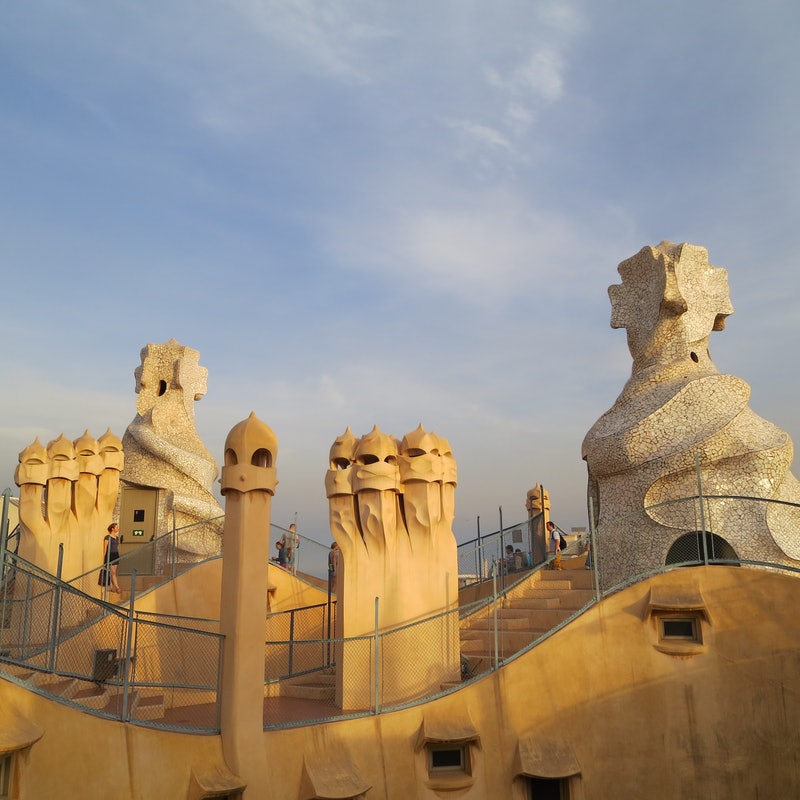
The 4,500-square-meter building spread over five floors includes a museum, the reproduction of an early-20th-century apartment, an exhibition of Gaudí’s work, and the rooftop terrace.
Touring Casa Milà will take at least an hour.
Other Gaudí Buildings
Depending on your stamina and your interest in Gaudí, you may want to visit other notable Gaudí buildings. Here are two more.
Casa Batlló
Check out the colorful mosaics made of broken ceramic tiles that decorate the facade. Located at Passeig de Gràcia, 43.
Casa Vicens
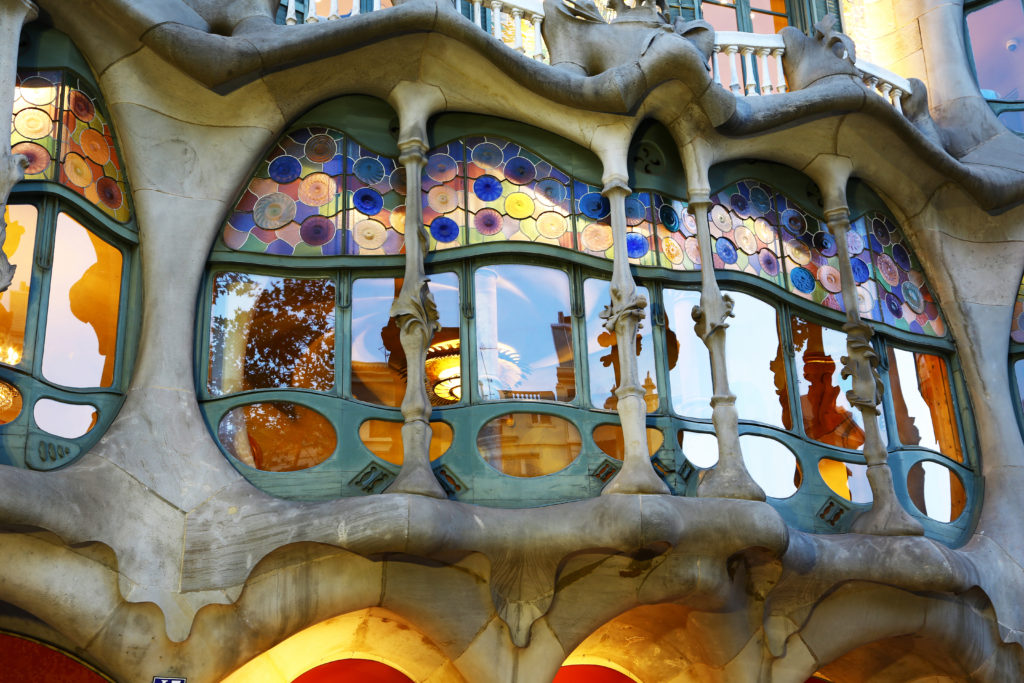
Casa Vicens is one of Gaudí’s first buildings and considered one of the first modernist buildings in the world. A UNESCO World Heritage site, the building is a museum showcasing Gaudí’s work and includes temporary exhibitions. It’s located at Carrer de les Carolines, 20-26.
After all that Gaudí, you’ll be ready for lunch. Find a café and rest your weary feet for a while. Afterward, jump back on the bus and head to the Sagrada Familia.
Sagrada Familia
You must get tickets for the Sagrada Familia well in advance. This ticket lets you skip the line and includes a guided tour and tower visit.
Choose the time you want to go—say, 11 or noon, if you start your day at the Casa Milà.
Arrive at least thirty minutes early. You’ll still queue but not for as long as the people who didn’t plan ahead. In fact, if you don’t get advance tickets, you may end up waiting three hours or longer. When I visited at 3 pm, people were being told that the next entrance time was 6 pm.
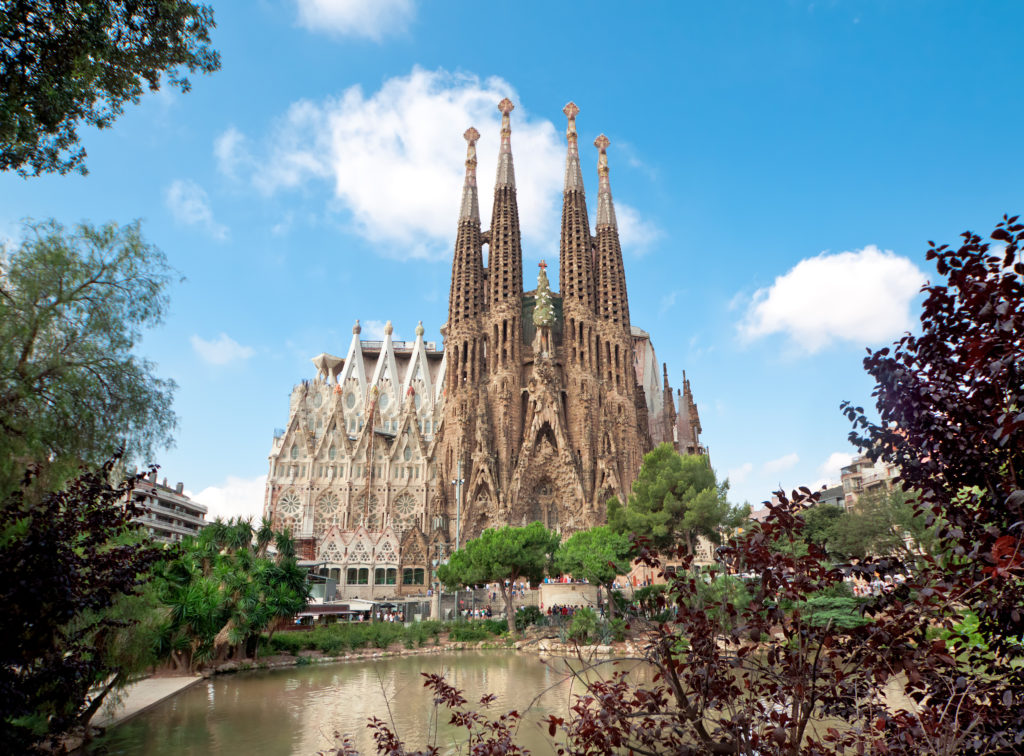
I visited on a sweltering August day. While waiting for my appointed time, I jotted down a few notes:
Sticky hot, sweat pooling, most voices are Spanish. Hear the occasional Brit; a family of Italians at the bench across the way is having a spirited argument. Everyone’s face is red and slick. Flies land on scratched skin and settle in until flicked off.
Wearing black jeans with a polyester top in 35-degree heat and what feels like 80% humidity is a misguided fashion choice. The first taste of cold agua con gaz is raw and life-giving–a torrent of bubbles blazing down a desperate throat.
Inside the Sagrada Familia
At your scheduled time, if you’re not taking a tour, join the hordes trudging around the perimeter of the basilica to the entrance for ticket holders, and pick up an audio guide (included in the ticket price and very informative) as you enter.
Stop and gasp.
The interior of the Sagrada Familia, although heaving with tourists snapping photos, is breathtaking. I can’t think of a better word. I’ve visited my share of cathedrals and have a soft spot for stained glass, but I’ve never seen stained glass used with such joyous abandon.
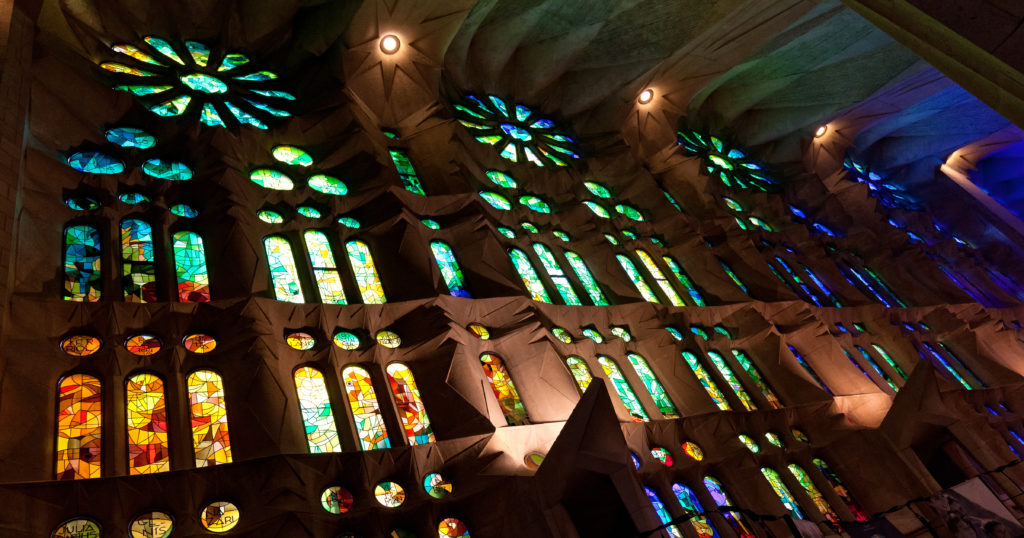
Marvel at the abstract patterns in blues and golds and greens and reds that diffuse the Barcelona sun into fractured splashes of color across faces, walls, t-shirts, and floors. High above, star-shaped openings punch the roof to let the sun stream in like bolts of pure light.
Sink into a pew and just stare. The bustle of people surging around the area cordoned off for sitting and contemplating fades into hushed murmurs. Regardless of your religious convictions, you can’t help but appreciate the magnificence of the architecture as a fitting celebration of spirit. You may never want to leave.
The Sagrada Familia was started in the 1880s and is not yet finished. Cranes arch across the towers, and you’ll hear hammers pounding. After visiting the interior, take a leisurely walk around the building to admire the intricate sculptures encrusting the walls like artsy barnacles.
Parc Güell
If you’re visiting Barcelona in the summer, consider returning to your hotel to cool off for a while before venturing out to the Parc Güell. The Cram Hotel featured a rooftop pool that I was grateful for after my Sagrada Familia visit.
In the late afternoon, emerge refreshed and hop back on the bus. The Parc Güell features Gaudí’s fabulous mosaics and awesome views. When I visited with Gregg on a Sunday afternoon, we were convinced that half of Europe was in the park. We heard a lot of French, Italian, and Spanish but hardly any English.
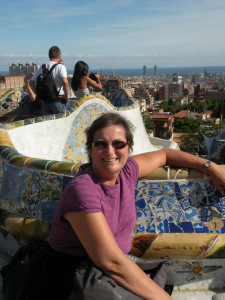
Don’t miss the iconic Gaudí salamander, although you’ll be hard-pressed to get a people-free photo of it. Other attractions include the Hypostyle Room, Guard Museum, Gardens of Austria, and Nature Square.
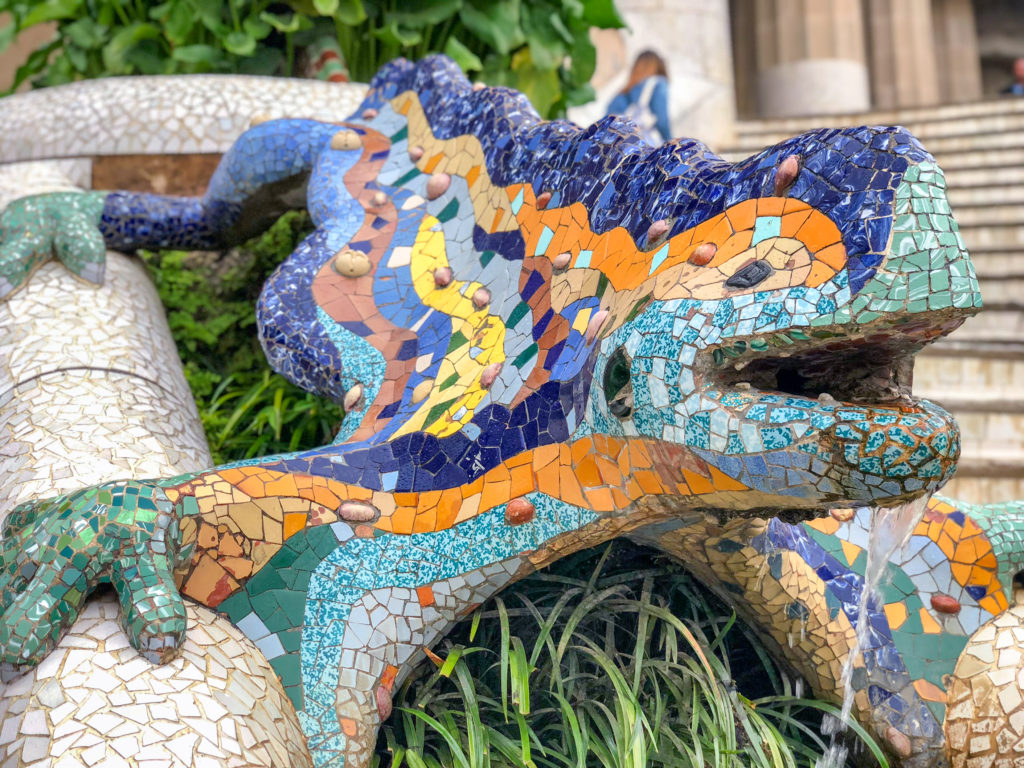
Get your tickets in advance to avoid line-ups and to guarantee entry.
Palau de la Música
Before you visit Barcelona, check the website to find out what’s on at the Palau de la Música. If tickets to a performance that interests you are available, get them. Sit up in the balcony to gape at the fabulous ceiling.
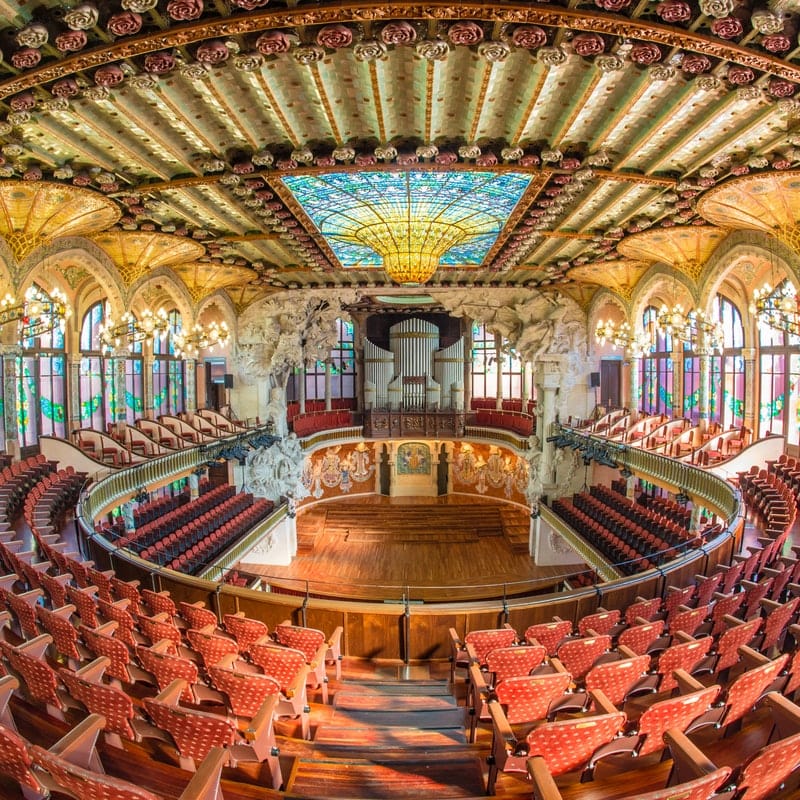
Another option is to visit the Palau de la Música on a guided tour. Whatever way you see this fabulous modernista building, make room for it in your Barcelona itinerary.
Day 2: Art Barcelona
Head first to the Barrí Gothic (Gothic Quarter) and get lost in its medieval streets. I love this part of Barcelona in the morning, when crowds are thin and the air is moderately cool.
Picasso Museum
After poking around the area, navigate to the Picasso Museum (Museu Picasso). Skip the line with a ticket you pre-purchased online and enjoy this homage to Picasso. You’ll see lots of work from his early years and get an excellent sense of his progression, from realism to abstraction and just about every 20th century art style in between, over the course of a very long life.
The museum also features special exhibitions that highlight aspects of Picasso’s work and relationships with other artists.
Take a virtual tour of the Picasso Museum!
Consider a Picasso Walking Tour and Skip-the-Line ticket.
Barcelona Cathedral
Before you leave the Barrí Gothic, visit the Gothic-style cathedral, also known as La Seu. Notable is its 14th-century cloister full of palm trees and a Gothic portico where, apparently, 13 white geese wander. I didn’t count them.
The History Museum of Barcelona also looks intriguing although I haven’t yet visited.
Miró Foundation
The Fundació Joan Miró is fun to visit, whether or not you’re a Miró fan. The airy, light-filled building is part of its attraction. Designed by architect and city planner Josep Lluís Sert, the building is a leading example of avant-garde school of architecture in Catalonia.
If you’re new to Miró’s work, get the audio guide and learn what he was all about. His work makes me smile!
Where to Stay in Barcelona
For accommodation suggestions in Barcelona, see Where to Stay in Spain: My Best Picks.
